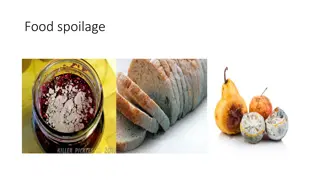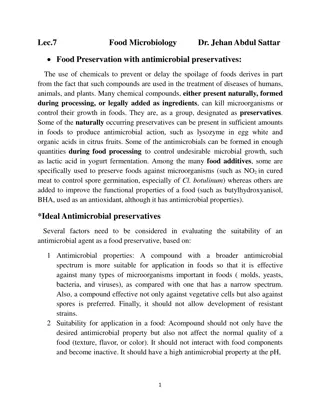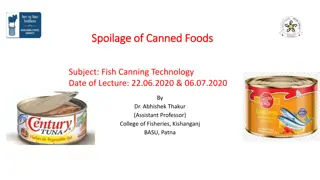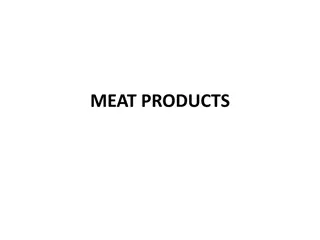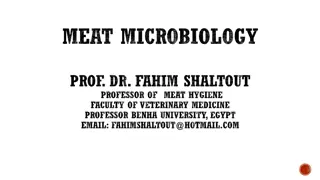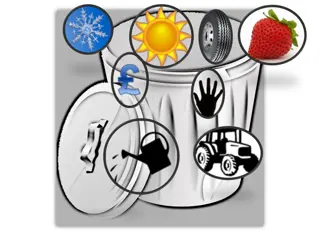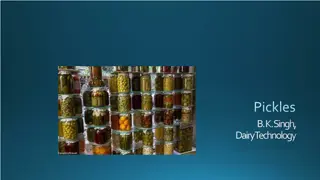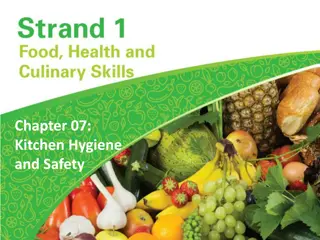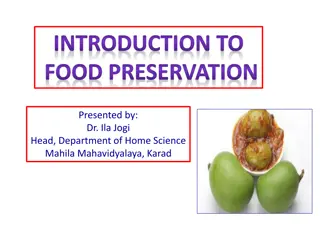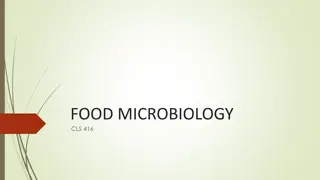Food spoilage
In this lecture from the Department of Pathological Analyses at the University of Basrah, Prof. Dr. Saad S. Mahdi Al-amaradi Al-Amara discusses food spoilage, focusing on cereals, bakery foods, and meat products. The presentation covers the microbial spoilage of grains, including common mold species and mycotoxins, as well as the spoilage of bread due to fungal and bacterial growth. Moreover, the microbiological profile of meat, poultry, and seafood is explored, highlighting pathogens, spoilage indicators, and processing methods to ensure food safety.
Download Presentation

Please find below an Image/Link to download the presentation.
The content on the website is provided AS IS for your information and personal use only. It may not be sold, licensed, or shared on other websites without obtaining consent from the author. Download presentation by click this link. If you encounter any issues during the download, it is possible that the publisher has removed the file from their server.
E N D
Presentation Transcript
UNIVERSITY OF BASRAH / COLLEGE OF SCIENCE lecture 9 Food spoilage Department of Pathological Analyses Presented by Prof.Dr. Saad S. Mahdi Al-amaradi Al-Amara
Microbial Spoilage Of Cereals And Bakery Foods Grains are low moisture commodities, reducing spoilage and shelf-life. Spoilage occurs due to moisture absorption during storage, leading to fungal growth at high temperatures and humidity. Cereal grains and Flours Grains and flours can be contaminated by Pseudomonas, Micrococci, Lactobacillus, and Bacillus, but due to low moisture content, they have a long shelf life. Common mold species include Aspergillus, Rhizopus, Mucor, and Fusarium, with mycotoxins being a significant spoilage factor. Spoilage of Bread Bread, a flour-based product, undergoes fermentation, requiring desirable microorganisms to grow. Overfermentation leads to souring, moldiness, and ropiness, reducing dough rising capacity.
Spoilage of Bread Bread making at high temperatures reduces microorganism survival, leading to contamination during cooling, packing, handling, and environmental factors. Common molds include Rhizopus stolonifer, Penicillium expansum, Aspergillus niger, Mucor, and Geotrichum. Ropiness in bread is a common issue in homemade breads, caused by bacterial growth by Bacillus subtilis or B. licheniformis. This occurs when proteinases and amylases hydrolyze bread flour protein and starch, resulting in a yellow to brown color, soft, sticky surface, and odor. Chalky bread spoilage occurs due to yeast growth in Endomysis and Trichosporon, resulting in white chalk-like spots. Red or bloody bread spoilage occurs due to Serratia marcescens bacteria, producing a brilliant red color on starchy foods, giving them a bloody appearance.
Microbiology of Meat, Poultry and Sea Foods The microbiological profile of meat products includes slaughtered animal health, rearing conditions, slaughtering quality, processing, packaging, and storage conditions. Meat pathogens can cause enteric diseases, systemic infections, and harm immunocompromised, elderly, and young populations. Major meat associated pathogenic bacteria include Clostridium perfringens, Staphylococcus aureus, Salmonella spp, pathogenic strains of Escherichia coli, Campylobacter spp, Yersinia enterocolitica, Listeria monocytogenes and Aeromonas hydrophila Micro-organisms associated with meat during processing Meat spoilages indicate (a) color changes (b) textural changes . (c) development of of flavor or off-odor or slime as a result of microbial growth
Micro-organisms associated with meat during processing Salmonella is the main microbial challenge for poultry, while Escherichia coli O157: H7 is the main microbial for beef. Listeria is a major issue for ready-to-eat meat products. Decontaminants like organic acids, steam carcass pasteurization, and ozone are used during meat processing. Carcass washing can reduce microbial loads by 2 logs. The meat industry uses the (Hazard Analysis Critical Control Point) HACCP food safety system to ensure safe consumption and prevent hazards. Gram-negative bacteria (Aerobes): Neisseriaceae: Psychrobacter immobilis, P. phenylpyruvica, Acinetobacter spp., A. twoffii, A. Johnsonii, Pseudomonadaceae: Pseudomonas fluorescens, P. lundensis, P. fragi, P. putida Gram-positive bacteria Brochothrix thermosphacta, Kurthia zophii, Staphylococcus spp., Clostridium estertheticum, Clostridium frigidicarnis, Clostridium casigenes, Clostridium algidixylanolyticum sp.
Biochemical events that lead to rigor mortis Upon the slaughter of a well-rested beef animal, a series of events takes place that leads to the production of meat. The following are stages of an animal s slaughter: 1. Its circulation ceases: the ability to resynthesize ATP (adenosine triphosphate) is lost; lack of ATP causes actin and myosin to combine to form actomyosin, which leads to a stiffening of muscles. 2. The oxygen supply falls, resulting in a reduction of the O/R (oxidation reduction) potential. 3. The supply of vitamins and antioxidants ceases, resulting in a slow development of rancidity. 4. Nervous and hormonal regulations cease, thereby causing the temperature of the animal to fall and fat to solidify.
Biochemical events that lead to rigor mortis 5. Respiration ceases, which stops ATP synthesis. 6. Glycolysis begins, resulting in the conversion of most glycogen to lactic acid, which depresses pH from about 7.4 to its ultimate level of about 5.6. This pH depression also initiates protein denaturation, liberates and activates cathepsins, and completes rigor mortis. Protein denaturation is accompanied by an exchange of divalent and monovalent cations on the muscle proteins. 7. The reticuloendothelial system ceases to scavenge, thus allowing microorganisms to grow-unchecked. 8. Various metabolites accumulate that also aid protein denaturation.
Spoilage of fresh meat Meats are primarily composed of protein and fats, with water content ranging from 71-76%. Good sanitation practices are essential for producing high-quality meats after slaughter. The number of spoilage organisms on meat is crucial for shelf life. Beef carcasses can contain 101-107 cfu/cm2, mostly psychrotrophic bacteria. Chopping and grinding meats can increase the microbial load, as more surface area is exposed and more water and nutrients become available. Spoialage under anerobic condition. i) Souring is caused by production of formic, acetic, butyric, lactic, succinic and propionic acid. ii) Putrefaction. It is caused by decomposition of proteins under anaerobic condition by Clostridium species. The foul smell is due to production of hydrogen sulphide, mercaptans, indol, scatol, ammonia and amines.
Spoilage under aerobic condition 1.) Surface slime, caused by Pseudomonas, acinetobacter, Moraxella ,alcaligenes ,Streptococcus, Leuconostuoc, Bacillus and Micrococcus. 2.) Change in colour of meat pigment. The red colour of meat may be changed to shades of green, brown or grey by Lactobacillusand Leconostocs spp. 3.) Changes in fat. The unsaturated fat in meat gets oxidized by lypolitic bacteria which produce off odours due to hydrolysis of fats and production of aldehydes and acids. This type of spoilage is caused by lypolitic Pseudomonas, Achromobacter and yeast. 4.) Surface color change. The red pigment producing bacteria, Serratia marcescens, caused red spots on meat. Blue color surface is caused by Pseudomonas syncyanea and yellow color is caused by Micrococcus species. 5.) Off odor and off taste. Volatile acid like formic, acetic, butyric and propionic acid produce sour odor and Actinomycetes produce musty or earthy flavor. Yeast also cause sliminess discoloration and off odor and taste defects. 6.) Aerobic mold also cause spoilage in meat. These are stickiness, whiskers, black- spot, white-spot, green patches off odor and off taste.




